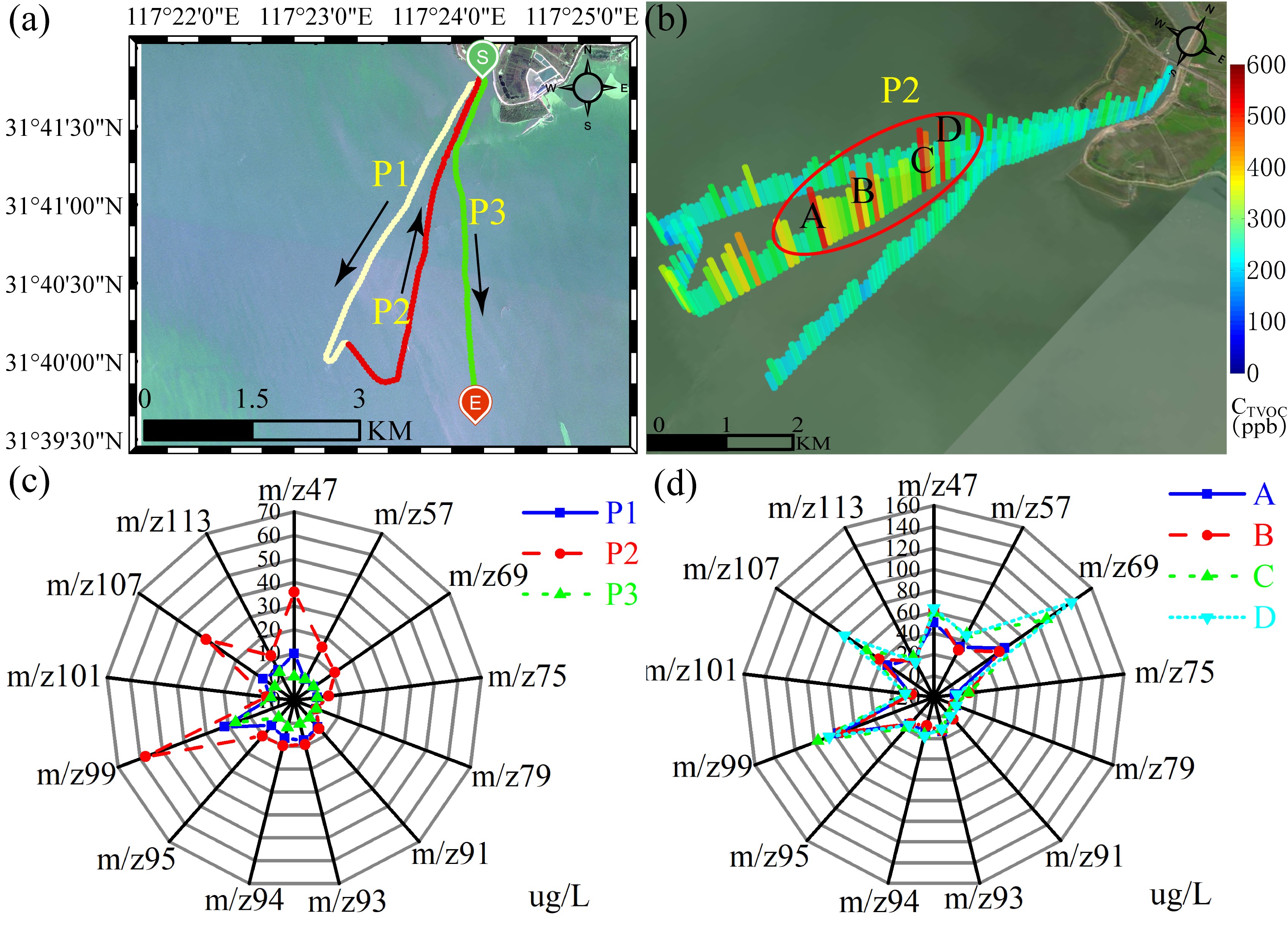
In order to quickly obtain the spatiotemporal distribution images of Volatile Organic Compounds (VOCs) in water, a research team, which was led by Prof. HUANG Ying from the Institute of Health and Medical Technology, Hefei Institutes of Physical Science (HFIPS) of the Chinese Academy of Sciences (CAS), developed a shipborne mass spectrometry system for monitoring VOCs in water recently.
The results were published in the Journal of Cleaner Production.
VOCs in water not only impact microbial growth but also contribute to air pollution and harm human health. Obtaining VOCs' distribution in water is crucial for understanding pollution, managing water bodies, and improving the environment. However, traditional detection methods are time-consuming and cannot provide quick insights into spatial and temporal characteristics or emission sources of VOCs in water.
The shipborne mass spectrometry system developed in this research can monitor VOCs in water. The spray extraction-proton transfer reaction mass spectrometry technique, which was applied in this system, help researchers quickly and online extract and real-time monitor VOCs in water.
What’s more, the system can integrate their component and concentration information with geographic information system (GIS). It allows for real-time visualization of the spatial distribution of VOCs in water. By doing so, it realized rapid imaging and tracing of the sources contributing to the distribution of VOCs in water.
In field test, the team verified its potential application. The system can be installed on ships for conducting large-scale surveys of VOC distribution in water bodies and tracing VOC emissions in rivers. It can also be installed at specific locations for real-time monitoring and early warning of VOCs in water, such as pipelines and rivers.


Diagram of S-SI-PTR-MS and the VOC distribution and fingerprints in Chaohu Lake. (Image by Liang Qu)